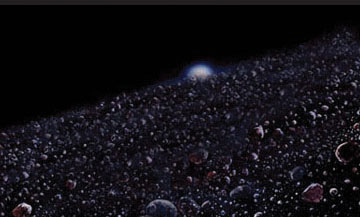After 10 years and millions of miles, on Aug. 6, the European Space Agency’s Rosetta will become the first spacecraft in history to place a lander on a comet. Professor of Physics Dan Holland, who has worked with NASA, the Naval Research Lab, UCLA, Imperial College and the University of Iowa on space and plasma physics, comments on the momentous occasion and what it means for science.
To understand how big of a deal this is, you have to think about how we have been studying comets close up in the past. Usually, a comet rendezvous consists of a comet and a spacecraft moving past each other at several thousand miles an hour. It’s a quick fly by, to say the least.
The Rosetta spacecraft will be the first to actually orbit a comet, known as 67P/Churyumov–Gerasimenko. (They are named after the people who discovered them). That in itself is really remarkable since it is not a really massive object, about a few miles wide. Once Rosetta is in orbit, it will fly with the comet the rest of the year.
Even more amazing, they hope to land a probe on the comet. It takes an awful lot of math to do this. In the past probes have been intentionally crashed into a comet, with instruments studying the dust that flies up from the crash. This one is meant to land and stay intact.
The information they can gain from this mission is potentially remarkable. Comets are thought to be leftover from the creation of the solar system 4.5 billion years ago. Their cores could be relatively untouched material from the beginnings of the solar system.
The project could give science a huge understanding of the solar system. There is amazing instrumentation on the spacecraft that could point out where in the solar system the comet may have originated. It is currently on an elliptical trajectory that takes it around the sun every 6.t years.
All planets have their own signature combination of elements. You know how people pick up a meteorite, take it to a lab and announce that it came from Mars? That planet, like all others, has its own combination of elements that help scientists identify them.
The idea now is that the comet may have came from the Oort Cloud or the Kuiper Belt, a region beyond Neptune that has a bunch of icy, chunky things in it. One of the largest chunky things there is Pluto. In fact, a different NASA’s probe (named New Horizons) should reach Pluto next year. Of course, it was a planet when the probe left. So you could say it is like that movie, The Englishman Who Went Up a Hill and Came Down a Mountain. But in this case, it is the spacecraft that went to visit a planet, and arrived a dwarf planet.
Dan Holland can be reached at dlholla@ilstu.edu.

